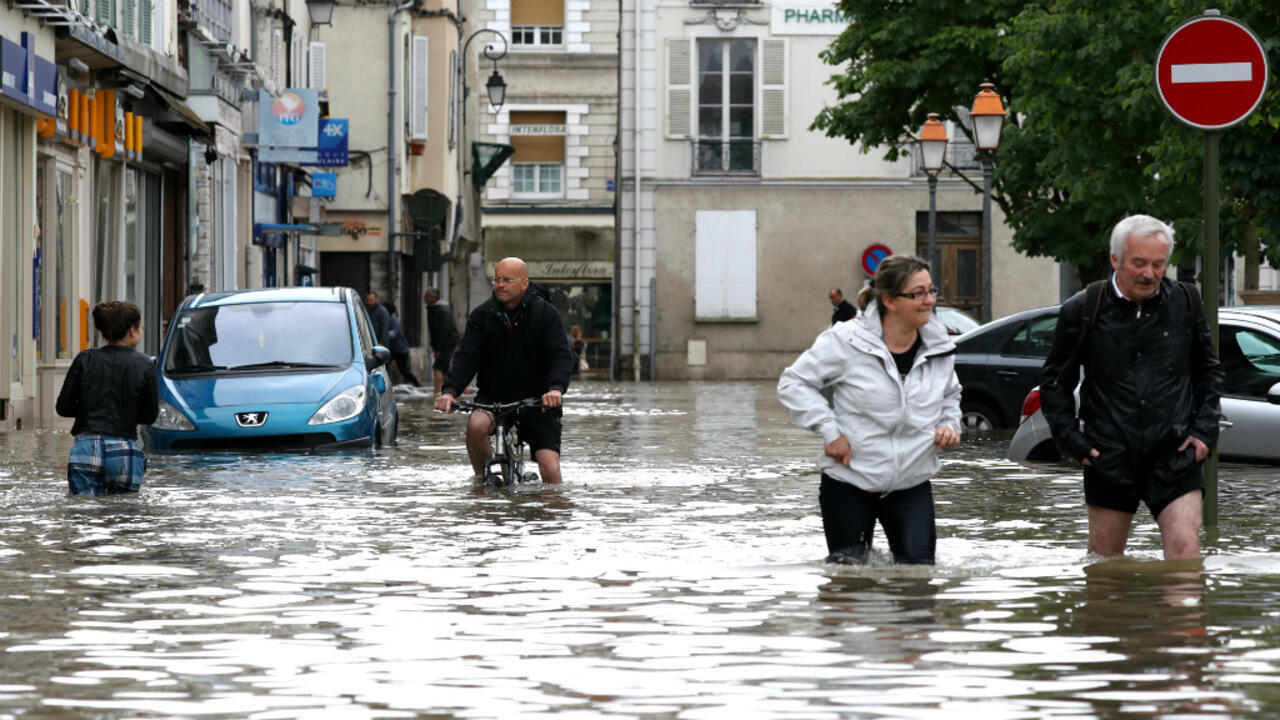Early June 2025 brought violent and unexpected weather to central France, leaving communities scrambling in the wake of destructive hailstorms and flash floods. Departments such as Allier, Nièvre, and Puy-de-Dôme were hit hardest, witnessing tennis ball-sized hailstones and rain so heavy that city streets became temporary rivers. The suddenness and intensity of these events raised alarm bells across the region, prompting weather alerts, emergency services, and renewed discussions on climate instability.
What Exactly Happened? Key Weather Events
Between June 3rd and 5th, Météo-France issued orange alerts for multiple departments due to incoming thunderstorms with a high risk of hail and torrential rain. Montluçon and Vichy experienced rainfall exceeding 50 mm in under an hour. In Moulins, sudden downpours flooded streets and basements, causing havoc for homes and small businesses. What began as a warm, humid afternoon quickly evolved into a violent spectacle of wind, ice, and water—a textbook case of atmospheric instability gone rogue.
Weather Patterns Behind the Storm
Meteorologists explained the severity as a perfect blend of heat, moisture, and upper-atmosphere instability. A high-pressure ridge over southern Europe broke down, allowing colder Atlantic air to rush in. The clash triggered a mesoscale convective system, an organized group of thunderstorms capable of generating widespread and long-lasting impacts.
With record-warm ground temperatures and a weak but present jet stream, supercells developed quickly. These storms had strong updrafts that carried moisture to upper levels, where it froze into hailstones before plummeting back to Earth at high speed. Climate scientists noted that such intense, localized events are becoming more frequent due to atmospheric warming trends.
Damage Report
The destruction was swift and extensive. Roofs were punctured, windows shattered, and parked vehicles heavily dented. Power lines snapped, and roads were blocked by floodwater or fallen debris. Agricultural regions saw devastating crop losses, particularly vineyards and barley fields. In Allier alone, over 200 insurance claims were filed within 48 hours, and estimates suggest the total damage may exceed €15 million.
Voices from the Ground: Residents React
“It sounded like the sky was throwing rocks at us,” said one resident of Vichy, who recorded the hailstorm cracking her car windshield. A local farmer lamented losing his entire potato crop, calling it “the worst June I can remember.” On social media, dramatic videos of hail bouncing off rooftops and flash floods sweeping down rural lanes went viral, capturing the global imagination.
Emergency Response and Mitigation
Local fire brigades responded quickly, assisting with basement pump-outs and clearing debris. Temporary shelters were set up in affected communes, and sandbags were distributed to vulnerable households. Météo-France deployed high-resolution satellite data to track developing storms in real-time, helping officials issue updates and advisories. The French Ministry of the Interior coordinated with regional councils to assess damage and organize clean-up operations.
Is France Facing More of These?
Experts point out that France has seen a 35% increase in severe hail events over the past decade. Urbanization, outdated drainage systems, and rising temperatures combine to create a volatile mix. In 2022, southern France faced similar hail damage during a summer heatwave. Researchers warn that as summers get hotter and wetter, central France may increasingly become a hotspot for convective storms and flash flooding.
What Can Residents Do? Preparedness Tips
Residents in risk-prone zones should:
- Subscribe to weather alert apps like the World Weather Online App.
- Install hail protection nets for gardens and crops.
- Secure rooftop windows and skylights with storm guards.
- Keep emergency kits with flashlights, water, and insurance documents handy.
- Check local flood maps and maintain clean gutters and drains.
Governments must also invest in more innovative drainage infrastructure and launch public awareness campaigns about rapid-onset storms.
Way Forward: A Storm to Remember
This week’s chaos in Central France was more than just another weather event—it was a reminder. A reminder that nature is not just beautiful but also powerful and unpredictable. As communities rebuild and insurers tally the losses, the bigger question remains: Are we ready for a future where such extremes may become the new normal? The answer lies in preparation, adaptation, and collective resilience!




